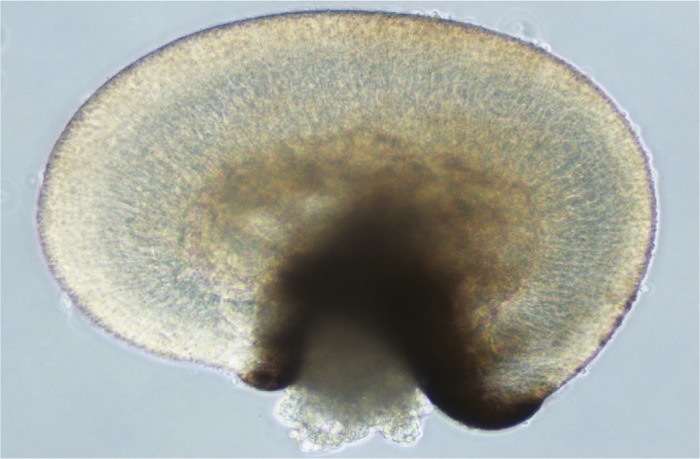Active learning and STEM education

A graduating class. Image courtesy of iStockphoto/janniswerner.
The push to produce STEM teachers and graduates as a means of improving innovative capacity in the United States has raised the question of what constitutes effective STEM education. To investigate the success of different teaching methods, Scott Freeman et al. (pp. 8410–8415) compared undergraduate performance in STEM courses that employed either active learning, defined as methods of instruction that engage students through activities and discussion, or passive lecturing. The authors analyzed data from 225 studies conducted between 1942 and 2010 that compared course exam results or failure rate for students trained by one of the two methods. Despite differences in the type and degree of active learning incorporated in the courses examined, the analyses revealed 6% higher average exam scores for students in courses that included some degree of active learning, compared with courses that included only passive lecturing. Further, failure rates for students in passive lecture courses were 55% higher than in active learning courses. The benefits of active learning were effective across all class sizes, but greatest for classes smaller than 50 students. According to the authors, the results suggest that effective STEM undergraduate education should include a degree of active learning. — J.P.J.
Soap films help link topological transitions with singularities
By carefully deforming well characterized surfaces such as Möbius bands and catenoids, previous studies have demonstrated that certain topologies shift to new configurations through singularities. But questions such as whether the location of the singularity depends on the surface topology and whether this dependence arises from an equation of motion for the surface remain unanswered. Using experiments with soap films, computation, and theory, Raymond Goldstein et al. (pp. 8339–8344) examined topological transitions and introduced simple concepts to describe generic transitions and associated singularities. The authors show that the location of singularities, in the bulk or at the boundary, may depend on the shape of the surface at the onset of the singularity, an initial condition that in effect determines the shortest path, or geodesic, through which the boundary can deform. In particular, the authors report, if the initial geodesic is linked to the boundary, the singularity will occur at the boundary. If the two are unlinked, however, the singularity occurs in the bulk. Though preliminary, the findings offer insights into which variables influence topological transitions and singularity formation in moving soap films, according to the authors. — T.J.
Parsing Asian Americans′ academic prowess

Asian American students’ educational attainment linked to effort. Image courtesy of iStockphoto/bo1982.
Asian Americans’ academic performance, compared with that of white peers, has been variously proposed to stem from family demographics, cognitive skills, and sustained academic effort, as measured by attentiveness and work ethic. To find the likely explanation, Amy Hsin and Yu Xie (pp. 8416–8421) analyzed data pertaining to Asian American and white students from two longitudinal national surveys in the United States that included 1,368 whites and 244 Asians from the ECLS-K cohort, who entered kindergarten in 1998 and were followed through the eighth grade, and 2,878 whites and 745 Asians from the ELS cohort of students who were high school sophomores in 2002. Using a combination of measures, including GPA, standardized test scores, teacher reports of academic achievement, socio-demographic factors, and immigration status, the authors report that the Asian Americans’ educational advantages relative to whites could be correlated with academic effort but not cognitive ability. Parental expectations, cultural emphasis on effort over ability, and immigration status, defined by whether the student and mother were foreign-born, might explain Asian Americans’ relatively greater academic effort, the authors suggest. However, questionnaires of self-reported well-being suggested that the Asian Americans were less inclined to harbor positive self-images, spent less time with friends, and faced more conflicts with parents, compared with their white peers, according to the authors. — P.N.
Monitoring air pollution and CO2 at New Mexico power plants
Regulation of gases causing air pollution requires accurate assessment of the sources and amounts of the emitted gases. Such assessments are critical in verifying emissions reductions. To measure emissions from two coal-fired power plants in northwestern New Mexico, Rodica Lindenmaier et al. (pp. 8386–8391) deployed solar spectrometers to measure atmospheric concentrations of carbon dioxide (CO2), carbon monoxide, and nitrogen oxides at a site close to the San Juan and Four Corners power plants. The authors also monitored the isotopic composition of CO2, which serves as a fingerprint of emissions from coal-fired power plants. Comparing ambient air observations of the air pollution plume with in-stack measurements of pollutants from the power plants, the authors report that up to 75% of the atmosphere in the region of these two power plants is polluted. Strong agreement between ambient air observations of the plume and in-stack measurements suggest that remote observation of air pollutants may provide a robust and effective method for monitoring both air chemistry and CO2 concentrations for greenhouse gas emission verification, according to the authors. — P.G.
Control of retinal circadian rhythms

Circadian oscillations trigger different levels of bioluminescent protein expression in mouse retina.
A small region of the mammalian hypothalamus called the suprachiasmatic nuclei (SCN) acts as a master controller for circadian rhythms throughout the body. The retina is the sole photoreceptive tissue that delivers information on light/dark cycles to the SCN, enabling the SCN to synchronize with the environment, yet it is unknown whether local circadian rhythms within the retina are controlled by the SCN or by direct exposure to environmental light/dark cycles. Ethan Buhr and Russell Van Gelder (pp. 8625–8630) examined whether light/dark cycles can control retinal circadian rhythm in mice that lack retinal photoreceptors, namely rods and cones, and the photopigment melanopsin, required for delivery of light/dark cycle information to the SCN. The authors found that retinal levels of a protein that normally oscillates with light/dark cycles continued to synchronize to light/dark cycles both in vitro and in mice lacking rods, cones, and melanopsin. The results suggest that the retina might employ a separate and as yet uncharacterized photopigment or photoreceptor for entrainment of its local circadian clock, and need not rely on the SCN for synchronicity as do other parts of the body. — J.P.J.
Converting stem cells into retinal cells

Neural retina-like structure differentiated from human induced pluripotent stem cells.
Current methods to convert stem cells into neural retinal cells, retinal pigment epithelium (RPE), and photoreceptor-like cells are intricate and laborious, requiring specialized nutrients and gelatinous matrices. Sacha Reichman et al. (pp. 8518–8523) developed a relatively efficient and scalable process for converting induced pluripotent stem cells derived from adult human fibroblasts into cobblestone-patterned monolayers of RPE and neural retina-like tissues containing retinal progenitor cells within 2 weeks; the progenitors could be further differentiated into retinal ganglion cells and precursors of photoreceptors. The authors report that the method obviated the need for some of the customary inducements for retinal differentiation, such as a supporting matrix and proteins added for retinal specification. Further, the method bypassed the formation of the embryoid body, a structure grown under 3D cell culture conditions and coated on adherent substrates during traditional differentiation of retinal cells. Inhibition of a signaling mechanism called the Notch pathway in the retinal progenitors increased the fraction of photoreceptor precursors in the neural retina-like structures. All told, the method helped generate transplantation-ready photoreceptor precursors within 42 days. According to the authors, the method might help create a repository of human RPE and retinal cells for pathogenesis research, drug development, and future transplantation approaches for retinal diseases such as glaucoma and age-related macular degeneration. — P.N.


